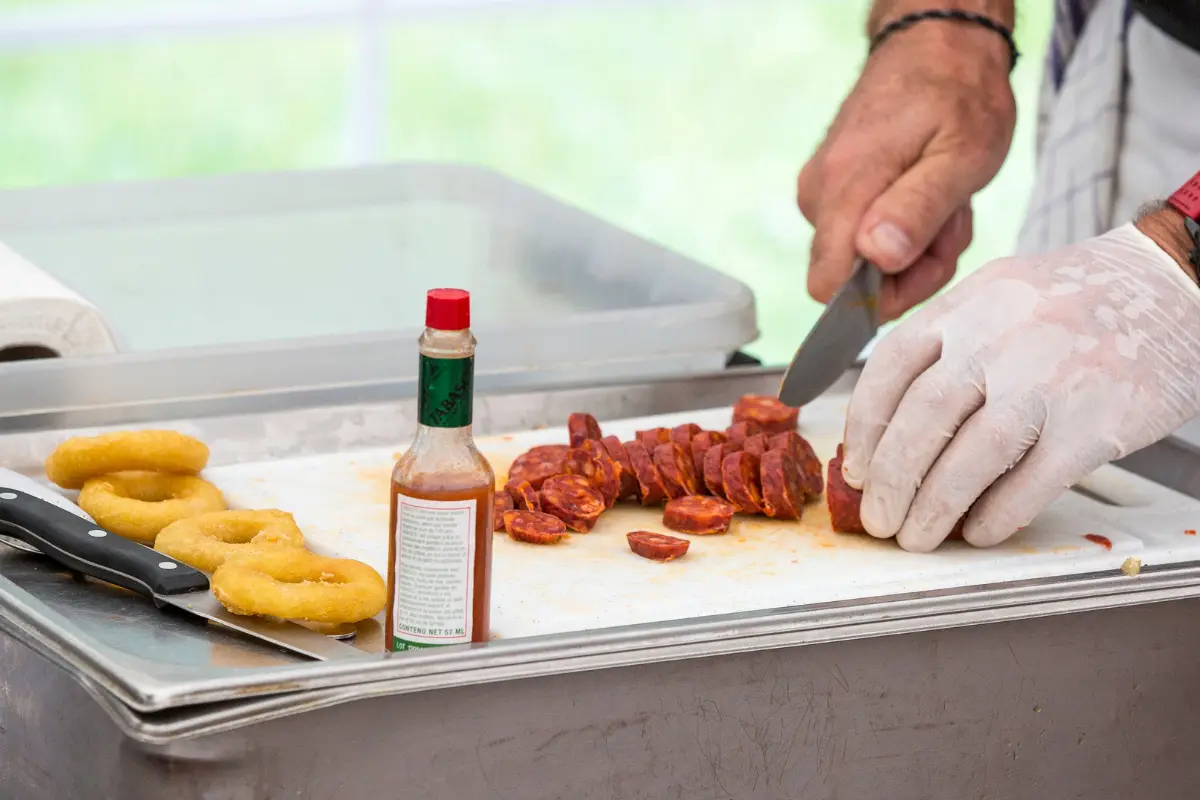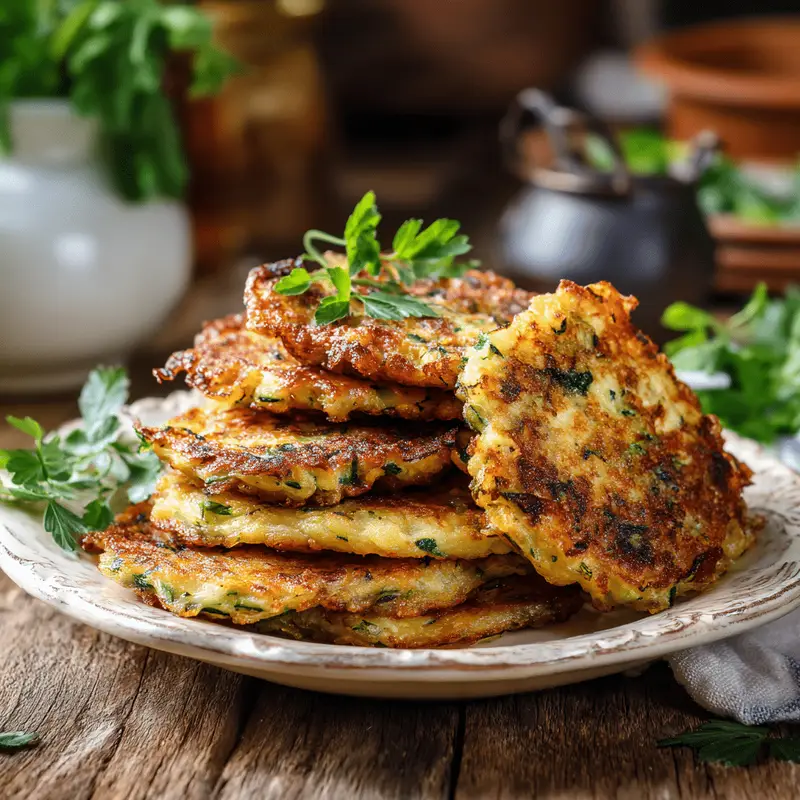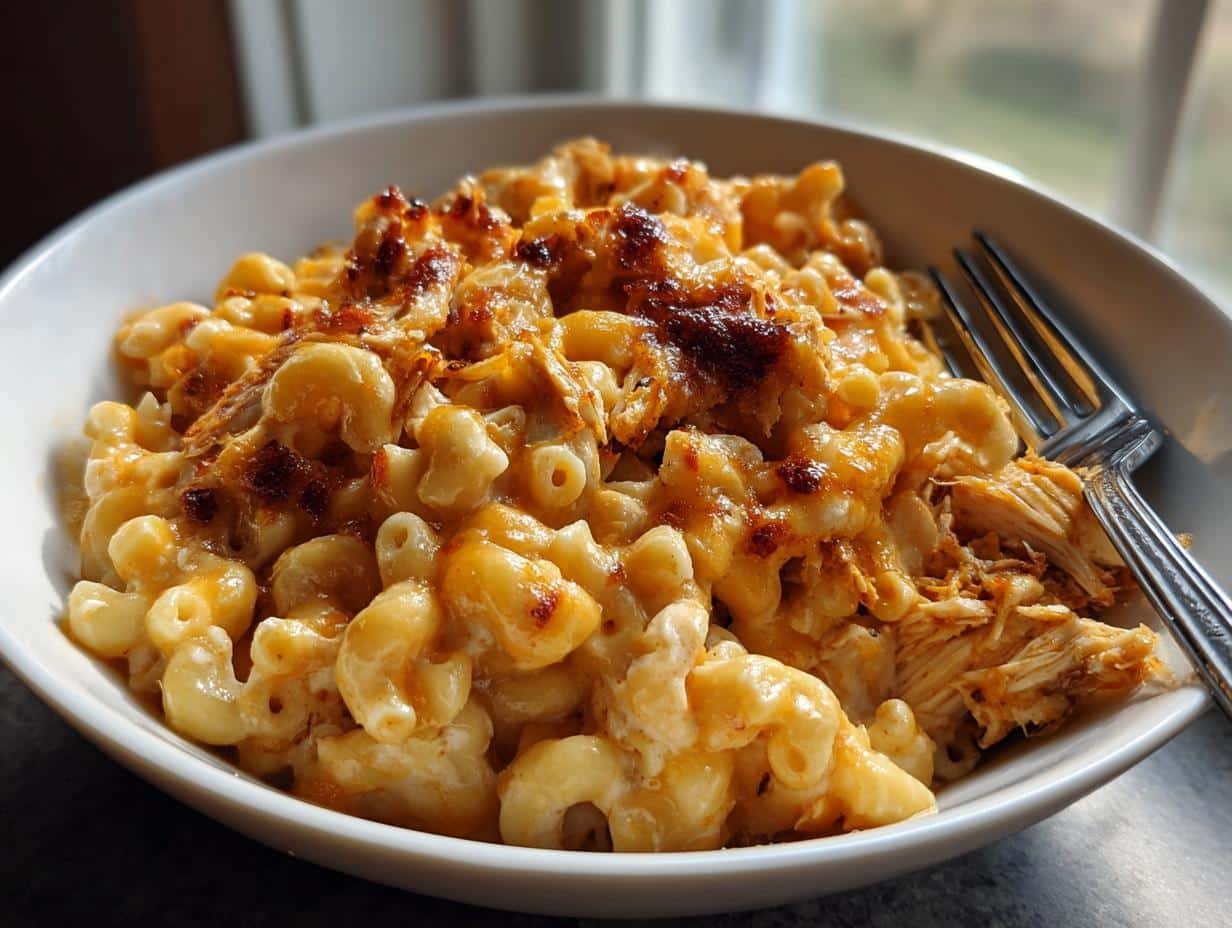In the culinary world, few dishes carry the rich history and hearty comfort of kielbasa. This traditional Polish sausage has woven its way through the fabric of many cultures, becoming a beloved ingredient in countless recipes. From the smoky aroma that fills the air as it cooks to the savory taste that delights the palate, kielbasa offers a unique culinary experience that transcends borders. In this comprehensive guide, we’ll embark on a flavorful journey through the world of kielbasa recipes. We’ll explore everything from the traditional methods of preparation to modern twists that will inspire your next meal. Whether you’re a seasoned chef or a curious foodie, this article promises to enrich your cooking repertoire with the warmth and richness of kielbasa.
Part 1: Introduction to Kielbasa
Ah, kielbasa—the mere mention of it conjures images of hearty meals and gatherings around the table. But what exactly is this culinary delight that has captured the hearts of so many? Let’s dive into the origins, importance, and varieties of kielbasa to set the stage for our delicious journey.
Brief History of Kielbasa
kielbasa isn’t just a sausage; it’s a tale of tradition and heritage. Originating from Poland, this beloved sausage has been a staple in Eastern European cuisine for centuries. The word “kielbasa” itself stems from the Polish word for sausage, encompassing a wide range of flavors and preparations. Historically, it was a way to preserve meat through the winter months, with each region adding its own unique twist to the recipe.
Importance in Polish Cuisine
In Polish culture, kielbasa is more than food—it’s a symbol of celebration and togetherness. It plays a starring role in many Polish festivities, including weddings and holidays. The preparation and consumption of kielbasa are steeped in tradition, with recipes passed down through generations, each adding their personal touch to this culinary legacy.
Varieties of Kielbasa
The world of kielbasa is as diverse as it is delicious. From the smoked kielbasa that’s perfect for grilling to the fresh varieties that shine in soups and stews, there’s a kielbasa for every occasion. Some of the most popular types include:
- Smoked Kielbasa: Known for its deep, rich flavor, this variety is a favorite for barbecues and hearty dishes.
- Fresh Kielbasa: A raw version that’s ideal for cooking and adding to recipes that call for a tender, juicy sausage.
- Garlic Kielbasa: Infused with garlic, this type offers a bold flavor that garlic lovers can’t resist.
As we continue our journey through the world of kielbasa recipes, keep in mind the rich history and diverse flavors that make kielbasa a beloved ingredient in kitchens around the globe. Whether you’re drawn to the traditional recipes or eager to explore modern interpretations, kielbasa promises to add warmth and depth to your culinary creations.
Part 2: Preparing for Kielbasa Making

Before diving into the world of kielbasa making, it’s crucial to gather your ingredients and equipment. A successful kielbasa recipe begins with quality components and the right tools. So, let’s get everything prepped and ready to go!
Essential Ingredients for Kielbasa
The heart of any kielbasa recipe lies in its ingredients. While variations abound, certain staples form the foundation of this savory sausage.
- Types of Meat Used: Traditionally, kielbasa is made with pork, known for its fat content and flavor. However, beef, venison, and even poultry can be used, offering a range of tastes and textures.
- Spices and Their Significance: The spice mix is what truly sets kielbasa apart. Key spices include salt, pepper, garlic powder, and marjoram. Each spice plays a role in flavoring the meat and preserving it, with garlic adding depth and marjoram offering a hint of sweetness.
Equipment Needed
Having the right equipment is just as important as the ingredients. Here’s what you’ll need to make kielbasa at home:
- Meat Grinder: A meat grinder allows you to process the meat to the perfect consistency for sausage making.
- Sausage Stuffer: This tool helps you fill the casings evenly, ensuring your kielbasa has a uniform shape and size.
- Smokehouse (Optional): For those making smoked kielbasa, a smokehouse or smoker is essential for imparting that characteristic smoky flavor.
With your ingredients and equipment at the ready, you’re well on your way to making delicious kielbasa. Remember, the quality of your ingredients and the care you put into the preparation will shine through in the final dish. Whether you’re sticking to traditional recipes or experimenting with new flavors, the journey of kielbasa making is a rewarding one. So, roll up your sleeves, and let’s get ready to create some culinary magic with kielbasa!
Part 3: Kielbasa Recipes
Now that we’ve got our ingredients and equipment ready, it’s time to dive into the heart of kielbasa making—the recipes. Whether you’re a fan of the traditional flavors or looking for a modern twist, these kielbasa recipes are sure to inspire your next culinary adventure.
Traditional Polish Kielbasa Recipe

Let’s start with a classic, the traditional Polish kielbasa. This recipe is all about honoring the time-honored flavors that have made kielbasa a staple in Polish cuisine.
- Ingredients:
- 2 pounds of pork shoulder, finely ground
- 2 garlic cloves, minced
- 1 tablespoon salt
- 1 teaspoon black pepper
- 2 teaspoons marjoram
- 1/2 cup ice water
- Sausage casings
- Step-by-step instructions:
- In a large bowl, combine the ground pork with the minced garlic, salt, pepper, and marjoram. Mix thoroughly to ensure the spices are evenly distributed.
- Gradually add the ice water to the meat mixture, continuing to mix until the mixture is sticky and well combined.
- Prepare your sausage stuffer and casings. Carefully feed the meat mixture into the stuffer and fill the casings, avoiding air pockets.
- Once the casings are filled, twist them into 6-inch links. Prick any air bubbles with a pin.
- Cook the kielbasa according to your preference—grilled, boiled, or smoked, until the internal temperature reaches 160°F.
Modern Takes on Kielbasa
For those looking to experiment, these modern takes on kielbasa recipes bring new flavors to the traditional sausage.
- Kielbasa with Beer:
- Swap out the ice water in the traditional recipe for beer for an added depth of flavor. The beer not only adds moisture but also infuses the kielbasa with a unique, malty taste.
- Spicy Kielbasa Recipe:
- Kick things up a notch by adding crushed red pepper flakes and paprika to the traditional recipe. Start with a teaspoon of each and adjust according to your heat preference.
Kielbasa for Every Occasion
kielbasa isn’t just for dinner; it’s a versatile ingredient that can be enjoyed any time of day.
- Breakfast recipes: Try slicing kielbasa and frying it up with eggs for a hearty start to your day.
- Dinner recipes: Incorporate kielbasa into stews or casseroles for a comforting evening meal.
- Quick snacks: Slice kielbasa, skewer with chunks of cheese and apple for a quick, delicious snack.
With these recipes, you’re well-equipped to explore the delicious world of kielbasa. Whether you’re keeping it traditional or adding your twist, kielbasa is sure to bring warmth and flavor to your table. So, why not give these recipes a try and discover the rich tastes and traditions of kielbasa cooking?
Part 4: Cooking Techniques and Tips
Mastering the art of kielbasa making isn’t just about following recipes to the letter. It’s also about honing your techniques and embracing tips that can elevate your sausage-making game. So, let’s delve into some best practices and common pitfalls to avoid, ensuring your kielbasa turns out perfectly every time.
Best Practices for Making Kielbasa
- Grinding Meat: For the best texture, keep your meat and equipment cold. This prevents the fat from melting during grinding, ensuring a firmer sausage. If possible, grind the meat twice for a finer texture.
- Stuffing Sausages: When stuffing your casings, aim for a consistent, even fill. Avoid overstuffing to prevent the casings from bursting during cooking. A steady hand and patience are your best friends here.
- Cooking Temperatures: Whether you’re smoking, grilling, or boiling your kielbasa, monitoring the internal temperature is crucial. The magic number is 160°F (71°C)—the point at which your sausage is cooked through yet still juicy.
Common Mistakes to Avoid
- Over/Under Seasoning: Finding the right balance of spices is key. Always start with less—you can add more, but you can’t take it away. Consider frying a small patty of the mixture to taste test before stuffing your casings.
- Casing Handling: Treat your casings with care. Soak them in warm water to make them pliable and easier to work with. Be gentle when sliding them onto the stuffer tube to avoid tears.
With these techniques and tips in your culinary toolkit, making kielbasa at home will be a breeze. Remember, practice makes perfect, and each batch of kielbasa you make is an opportunity to refine your skills and experiment with flavors. So, don’t be afraid to try new spices, adjust recipes to your taste, and most importantly, enjoy the process. After all, cooking is not just about feeding the body but also about nourishing the soul. Happy kielbasa making!
Part 5: Serving and Pairing Kielbasa
Once you’ve mastered the art of making kielbasa, the next step is to serve it in a way that complements its rich flavors and textures. Whether you’re looking for traditional side dishes or creative pairings, the right accompaniments can turn a simple kielbasa meal into a memorable feast.
Serving Suggestions
- Traditional Sides: In many cultures, kielbasa is traditionally served with sauerkraut and mashed potatoes. The tanginess of the sauerkraut beautifully balances the richness of the sausage, while the creamy potatoes provide a comforting base.
- Modern Pairings: For a modern twist, consider serving kielbasa with roasted vegetables or a crisp salad. The charred edges of roasted brussels sprouts or the fresh crunch of a green salad can add a delightful contrast to the savory sausage.
Best Types of Beer Pairings
While we’re focusing on non-alcoholic beverages, it’s worth noting that kielbasa pairs wonderfully with a variety of drinks. Opt for sparkling water or apple cider for a refreshing complement to the hearty flavors of kielbasa. The effervescence of these beverages can cleanse the palate between bites, enhancing the overall dining experience.
With these serving and pairing ideas, you’re well-equipped to enjoy kielbasa in a variety of delicious ways. Remember, the best pairings are the ones that suit your taste preferences and the occasion. So, feel free to experiment with different sides and beverages to discover your perfect kielbasa meal. Whether you’re hosting a dinner party or enjoying a quiet meal at home, kielbasa is sure to be the star of the show.
Part 6: FAQs (Frequently Asked Questions)
When it comes to kielbasa making and enjoying, there are always questions that pop up, whether you’re a novice or a seasoned cook. Let’s tackle some of the most common queries to help you become a kielbasa connoisseur.
Can kielbasa be made with poultry or game meats?
Absolutely! While traditional kielbasa is often made with pork or beef, there’s plenty of room for creativity. Poultry, like chicken or turkey, offers a leaner alternative and can be seasoned to match the robust flavors of more traditional meats. Game meats, such as venison, can also be used to create kielbasa with a unique taste. The key is to balance the leaner meats with the right amount of fat to maintain juiciness and flavor.
How long can homemade kielbasa be stored?
Proper storage is crucial for maintaining the quality and safety of your homemade kielbasa. In the refrigerator, fresh kielbasa can be stored for up to four days. If you’ve cooked your kielbasa, it can last in the fridge for about a week. For longer storage, freezing is your best bet. Wrapped properly, kielbasa can be frozen for up to three months without losing its flavor and texture. Always thaw frozen kielbasa in the refrigerator before cooking or reheating.
Tips for first-time sausage makers?
- Start Small: Don’t feel like you have to make a huge batch your first time. Starting small allows you to experiment without wasting ingredients.
- Keep Everything Cold: This can’t be stressed enough. Keeping the meat and equipment cold helps prevent fat from smearing, which can affect the texture of your kielbasa.
- Be Patient: Sausage making is as much an art as it is a science. It might take a few tries to get everything just right, so be patient and enjoy the process.
With these FAQs addressed, you’re well on your way to enjoying delicious homemade kielbasa. Remember, every cook has their own journey, and part of the fun is learning and experimenting along the way. So, embrace the adventure, and let the delicious world of kielbasa making unfold.
conclusion
As we wrap up our comprehensive journey through the world of kielbasa, it’s clear that this beloved sausage is more than just a culinary delight—it’s a bridge to cultural traditions, a canvas for creativity, and a testament to the joy of cooking from scratch. From understanding the roots and varieties of kielbasa to mastering the art of making it and discovering the best ways to serve and enjoy it, we’ve covered a lot of ground.
Making kielbasa at home is an enriching experience that not only allows you to control the quality and flavor of your food but also connects you with a rich culinary tradition. Whether you stick to time-honored recipes or venture into creating your own unique versions, the process of making kielbasa is a rewarding one.
Remember, the key to great kielbasa lies in the quality of ingredients, the precision of your techniques, and the passion you bring to the kitchen. Don’t be afraid to experiment with different meats, spices, and cooking methods. Each batch of kielbasa is an opportunity to refine your skills and explore new flavors.
So, here’s to the adventures in sausage making that lie ahead. May your kielbasa be juicy, flavorful, and a reflection of the love and care you put into it. Happy cooking!
For enhancing the depth and breadth of your article on kielbasa, consider incorporating informative external links that provide additional context and insights into the topic. Here are some suggestions for external links and the exact words or phrases in your article where they could be embedded:
Food Safety and Kielbasa:
- Given the importance of food safety in sausage making and consumption, an informative link to the U.S. Department of Agriculture’s Food Safety and Inspection Service (FSIS) could be invaluable. Embed this link in the section discussing the preparation or storage of kielbasa. Suggested anchor text: “safe sausage making practices.”
Kielbasa Recall Information:
To highlight the importance of staying informed about food recalls, especially concerning products like kielbasa, you can link to a recent recall news article. This can be placed in any section that discusses food safety or the importance of sourcing quality ingredients. Suggested anchor text: “recent kielbasa recall news.”
Cultural Significance of Kielbasa:
- For readers interested in the cultural and historical aspects of kielbasa, linking to an article that explores its significance in Polish cuisine and beyond would be enriching. This could be placed in the introduction or the section on the history of kielbasa. Suggested anchor text: “cultural significance of kielbasa.”
These links will not only provide your readers with a richer understanding of kielbasa but also support your article’s credibility by referencing reputable sources. Remember, the goal is to offer your readers a comprehensive view of kielbasa, from its culinary delights to important safety considerations.



